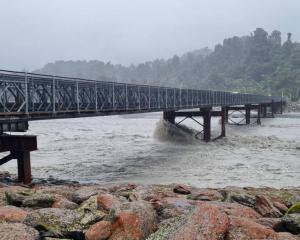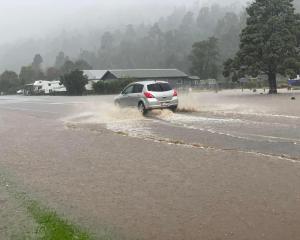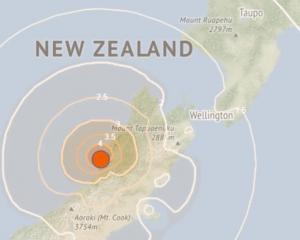Forest and Bird says efforts to rehabilitate the Stockton Plateau after open-cast coalmining has missed the point, with bright green grass sown rather than restoring the natural tussock landscape.
The Stockton Alliance, a partnership between Solid Energy and Downer EDI Mining, last week won the inaugural Minerals West Coast Environmental Award for its use of 'municipal biosolid waste' to create quality topsoil to rehabilitate mine sites, such as at Stockton.
Forest and Bird advocacy manager Kevin Hackwell, of Wellington, said the restored land was "awful", noting that part of the rehabilitation process used sewage.
While they were trying to do their best, their best was not good enough, and in the process were "actively destroying one of the country's must unusual landscapes," Mr Hackwell said.
"The pavements are solid quartz sandstone that can be many metres deep.
"The concrete-like sandstone is very infertile, which is why the natural vegetation is usually so stunted and sparse.
"Putting high-nutrient, organic soil made from sewage on those rubble benches and then planting them with introduced grasses creates a completely different habitat from what was there previously.
"These 'restoration areas' are nothing of the sort - they are not 'restoring' the previous habitats. They are completely foreign to the coal measure plateau that stretches from Denniston to Stockton."
Solid Energy spokesman Bryn Somerville said sandstone pavement was only one element of the Stockton landscape, the majority of which was - before mining - mixed scrub, heath and forest.
The rehabilitation started with grass as this could hold on to topsoil.
"It is not the end game and certainly not what the site will look like in decades to come. The annual grass is seeded with the topsoil to lock the soil on to the slope and stop it being washed away by the very heavy rainfall Stockton receives."
With the boost provided by the biosolids, the grass sent down roots quickly, binding the soil and holding it.
Resource consents were underpinned by substantial data that demonstrated the effects were less than minor.
"As well, traditional rehabilitation of such sites would require the application of artificial fertiliser to support plant growth, so re-using a waste product which provides the required nutrients, means less reliance on petrochemical-derived fertilisers."
- Laura Mills of the Greymouth Star











